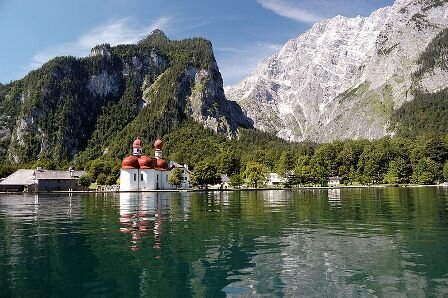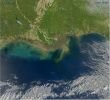One of these following facts about the Alps might have given you much information about the mountain. The Alps are one of the great mountain range of Europe stretching approximately 1,200 kilometers across eight Alpine countries from Austria and Slovenia in the east, France, Switzerland, Liechtenstein, and south east Germany, to the west, Monaco and Italy to the south. The mountains were formed over tens of millions of years as the African and Eurasian tectonic plates collided. Extreme shortening caused by the event resulted in marine sedimentary rocks rising by thrusting and folding into high mountain peaks such as Mont Blanc and the Matterhorn. To get to know more about the mountain ranges, here are some other facts about the Alps you might like.
Facts about the Alps 1: Mont Blanc
Mont Blanc spans the French–Italian border, and at 4,810 m (15,781 ft) is the highest mountain in the Alps. The Alpine region area contains about a hundred peaks higher than 4,000 m (13,123 ft), known as the “four-thousanders”.
Facts about the Alps 2: Water
The Alps provide water that those in the region drink; use for irrigation purposes; and create hydroelectric power in over 500 power plants, that can produce up to 2900 kilowatts of electricity per hour.
Facts about the Alps 3: Cultural Identity
The Alpine region has a strong cultural identity. The traditional culture of farming, cheesemaking, and woodworking still exists in Alpine villages, although the tourist industry began to grow early in the 20th century and expanded greatly after World War II to become the dominant industry by the end of the century.
Facts about the Alps 4: Etymology
The English word “Alps” derives from the Latin “Alpes” (through French). Maurus Service Honoratus, an ancient commentator of Virgil, says in his commentary (A. X 13) that all high mountains are called Alpes by Celts.
Facts about the Alps 5: Shaped Geographic Feature
The Alps are a crescent shaped geographic feature of central Europe that ranges in a 800 km (500 mi) arc from east to west and is 200 km (120 mi) in width. The mean height of the mountain peaks is 2.5 km (1.6 mi).
Facts about the Alps 6: Passes
The Alps have been crossed for war and commerce, and by pilgrims, students and tourists. Crossing routes by road, train or foot are known as passes, and usually consist of depressions in the mountains in which a valley leads from the plains and hilly pre-mountainous zones. In the medieval period hospices were established by religious orders at the summits of many of the main passes.
Facts about the Alps 7: Four-thousanders
The Union Internationale des Associations d’Alpinisme (UIAA) has defined a list of 82 “official” Alpine summits that reach at least 4,000 m (13,123 ft).The list includes not only mountains, but also subpeaks with little prominence that are considered important mountaineering objectives. Below are listed the 22 “four-thousanders” with at least 500 m (1,640 ft) of prominence.
Facts about the Alps 8: Minerals
The Alps are a source of a minerals that have been mined for thousands of years. In the 8th to 6th centuries BC during the Hallstatt culture, Celtic tribes mined copper; later the Romans mined gold for coins in the Bad Gastein area. Erzberg in Styria furnishes high-quality iron ore for the steel industry. Crystals are found throughout much of the Alpine region such as cinnabar, amethyst, and quartz.
Facts about the Alps 9: Rivers and Lake
The Alps provide lowland Europe with drinking water, irrigation, and hydroelectric power.Although the area is only about 11 percent of the surface area of Europe, the Alps provide up to 90 percent of water to lowland Europe, particularly to arid areas and during the summer months. Cities such as Milan depend on 80 percent of water from Alpine runoff.
Facts about the Alps 10: Ecology
About 13,000 species of plants have been identified in the Alpine regions.Alpine plants are grouped by habitat and soil type which can be limestone or non-calcerous. The habitats range from meadows, bogs, woodland (deciduous and coniferous) areas to soilless scree and moraines, and rock faces and ridges.
Hope you would find the Alps facts really interesting, useful and helpful for your additional reading.










 www.PortlandPayday.Loans
www.PortlandPayday.Loans